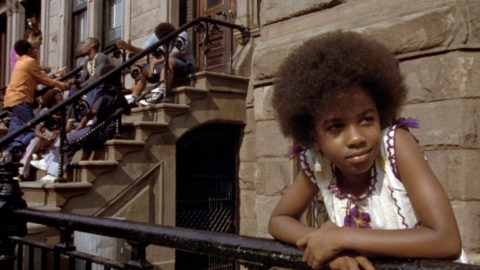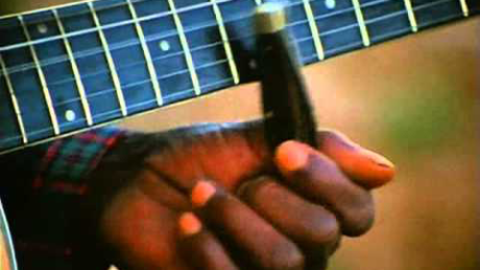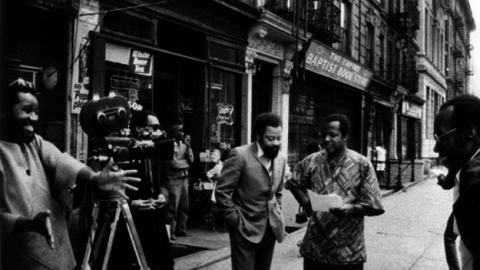Make It Real: The Long Echo of When the Levees Broke
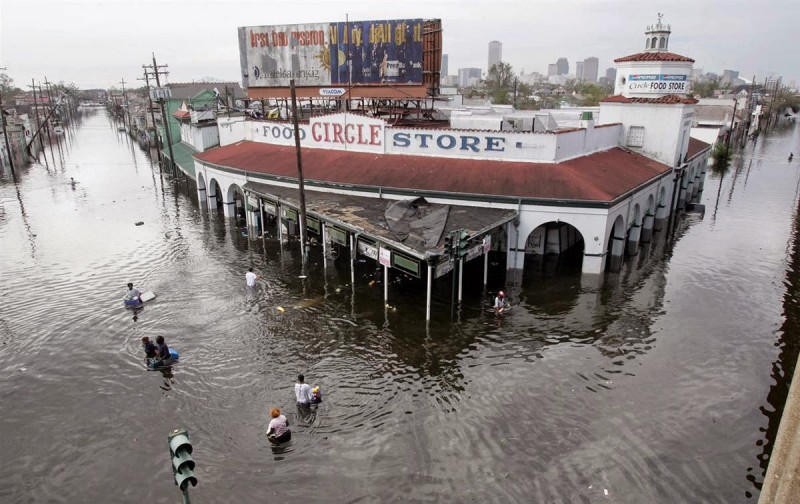
Aired to coincide with the one-year anniversary of Hurricane Katrina, during a summer when many residents of New Orleans still lacked permanent, or even adequate temporary housing, Spike Lee’s When the Levees Broke: A Requiem in Four Acts (06) chronicles a disaster that was still unfolding. Interview subjects recount events that took place mere months prior, often doing so perched in the settings of their protracted nightmares: in FEMA trailers without electricity, or a tent anchored where a house used to be, punctuated by staircase to nowhere. Lee was bearing witness to a wound that was still bleeding, and his film is a traumatized cry for help, for change, for a national reckoning. It’s a work of agitation, not quite propagandistic but certainly designed to have an effect beyond itself as it levels pointed critiques at the lax George W. Bush administration, lethally inept Army Corps of Engineers, and weaselly insurance companies.
You might think that When the Levees Broke would be consigned to its August 2006 date-stamp, offering viewers in August 2015 little more than an exhaustive historical record of a terrible moment. Yet while there’s value in such a document—language that Lee embraced with an opening scroll that referred to the work as a “film document”—When the Levees Broke was, and is, so much more than that. It exemplifies how a film rooted in a current event can also have a long legacy, and how a project with great political purpose can also become great art.
Note that though Lee calls his work a “film document,” he also subtitled it “a requiem.” Far from a simple vessel for information, When the Levees Broke assumes a rueful, emotive form, honoring the dead—both actual and metaphorical—through music in both a literal and metaphorical sense. Terence Blanchard’s bluesy, fore-grounded score is joined by an eloquent selection of preexisting songs; its metaphorical counterpart is the masterful construction of this 255-minute work by supervising editor/producer Sam Pollard and editors Geeta Gandbhir and Nancy Novack. When the Levees Broke is comprised of four fluid movements gathered under a single, sustained evocation. Music doesn’t merely accompany the film any more than it provides local color for the city in question. Rather it’s the body, blood, and spirit of the place, and Lee’s creation embodies and articulates this fully.
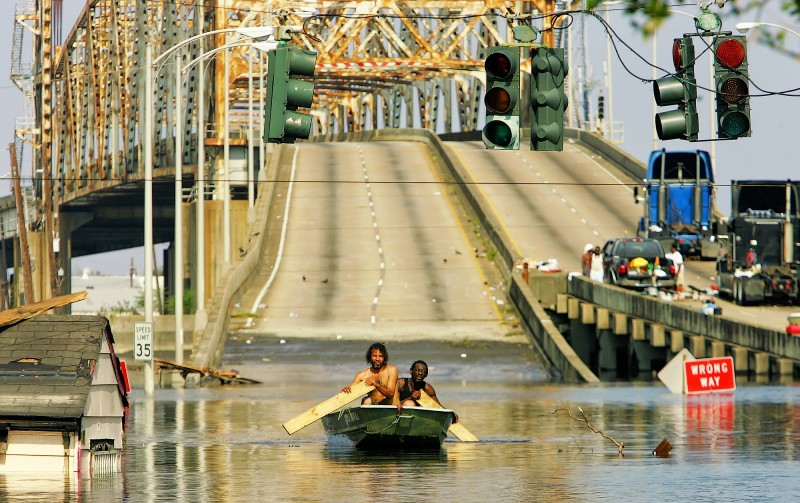
It all starts with a pre-credits montage to Louis Armstrong’s “Do You Know What It Means to Miss New Orleans.” The song’s complex coupling of sonic buoyancy (that somersaulting clarinet) with lyrical loss (that slight sustain of “do you know what it means”) is matched by a mix of recent images of the Big Easy at its best and worst, its most majestic and tragic. Shots of dancing are followed by shots of race riots, then shots of kids being airlifted out of the flooded Ninth Ward—of old New Orleans followed by a newly decimated New Orleans. It’s lively, rueful, ironic, distressing, and exquisite. The first song among many, “Do You Know” also acts as the lead movement of the first section, which in turn is the first of four movements within a single requiem. Lee begins with Armstrong’s evocation of New Orleans as both a place and an idea, longed for (then and now) and elusive.
Subsequently, all four episodes of When the Levees Broke conclude with “Walking to New Orleans” by Fats Domino, which plays over still images of citizens in distress. Like Armstrong, Domino sings of feeling removed from the city, except here he’s on his way back. The images don’t show a New Orleans one would seem to want to reclaim, but their play against the shuffling music isn’t ironic so much as defiant. Yes, the city is a disaster, and yes, they’re going back. “I’m gonna need two pair of shoes / When I get through walking these blues / When I get back to New Orleans,” Domino sings, and that’s the least of it for Lee’s subjects, many of whom have the tenacity and the commitment to recover and rebuild their lives, yet also have material and emotional needs that can’t be ignored. “Suitcase in my hand / Now ain’t that a shame / I’m leaving here today / Yes I’m going back home to stay,” Domino goes on, as we look at a picture of a completely submerged house. But the images keep coming, thwarting sentiment, marching forward along with Domino’s staccato, repeated chords.
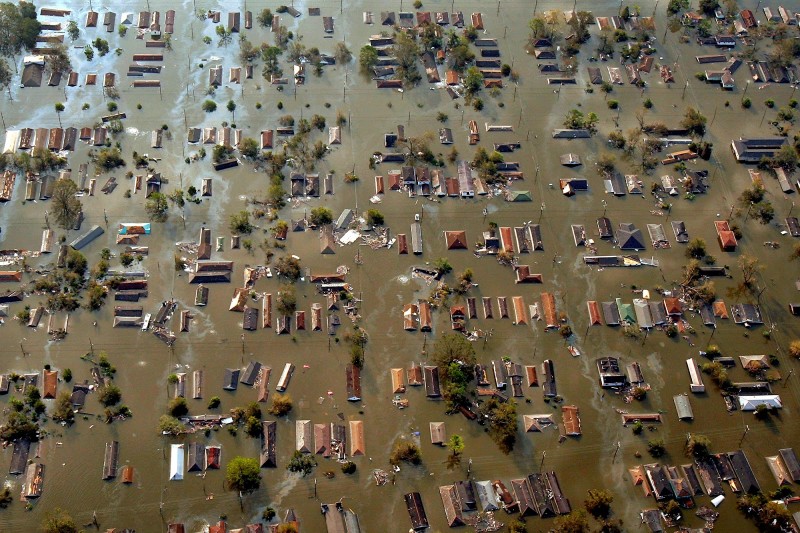
Blanchard appears occasionally as a subject, aggrieved and livid about what’s befallen his family and hometown, yet as a musician and composer he’s scarcely ever absent from the film. His orchestral arrangements percolate, swell, and seethe, while his trumpet plays apace of Lee’s interviewees, mournful and proud, the connecting voice for a chorus of survivors, as well as notable players like former Mayor Ray Nagin, activist Al Sharpton, and actor Wendell Pierce. Throughout the four episodes we also hear both testimony and music from native trumpeter and jazz statesman Wynton Marsalis, rapper Shelton Shakespear Alexander, drummer Donald Harrison, and the Hot 8 Brass Band, among others. We follow the Hot 8 to the streets of New York during the months of exile after Katrina, and we visit Congo Square in New Orleans, where slaves were allowed to gather every Sunday to play African music, and in the process invented jazz. We walk around the halls of the sweltering, besieged Superdome as evacuators spontaneously perform “This Little Light of Mine,” their nightmare turned into a vigil, hope briefly restored among people marooned in their own city.
The first two installments of the series (which was originally broadcast over two nights) proceed chronologically through the days before, during, and after the storm, while the final two take things further into the aftermath and recovery. Pollard and the editors freely double back or flip forward, opening into different pockets of New Orleans past and culture. Rarely is any of this time travel marked, nor are side-alley tangents made to seem like divergences from a main road. It all rather flows, bends, and slides like Blanchard’s playing, all part of the story, the song. The entire series lasts for over four hours, but this is no slow cinema. The movie is always moving, it’s always going somewhere, and in time makes its way pretty much everywhere—from the French Quarter to the mountains of Utah, from Lyndon B. Johnson to Condoleezza Rice, and from traumatized survivors to the abandoned, unaccounted-for dead.
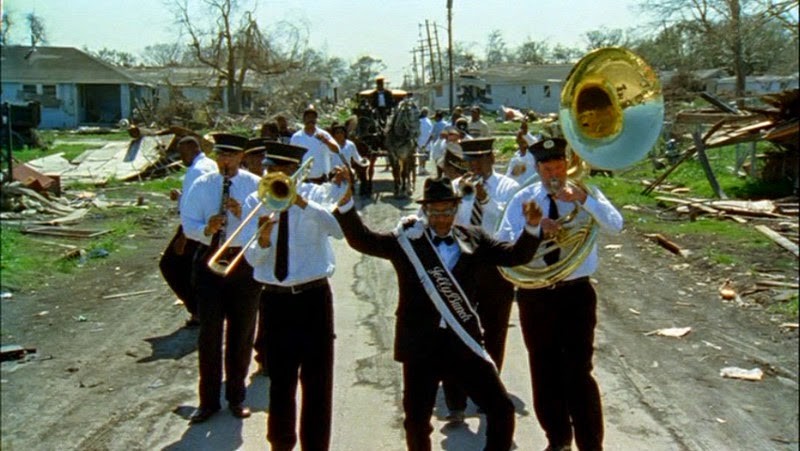
In the fourth and final episode, Lee thrillingly synthesizes story, music, history, reportage, documentary, and fantasy, by throwing a traditional New Orleans funeral for the storm herself. At the start of the episode a brass band saunters through the shadow of the breached levee, playing a somber, soulful version of “The Old Rugged Cross” while ushering a coffin labeled “Katrina” to a final resting place among the ruins of the Ninth Ward. And at the end, the same crew reverses course, turning the funeral parade into a party, singing the Albert Brumley spiritual “I’ll Fly Away” while dancing around the coffin and parading off into the city, the future, the land of the living. It’s tremendously moving, but also thoroughly appropriate in that it marshals the most defining aspects of a culture—its music, its iconography, its geography—toward offering a catharsis for that culture. The film is a requiem, a long, sad, angering exasperation, but this being New Orleans it also ends in a celebration, with the living and the ghosts of the dead gathered together in devotion and defiance to play a classic rousingly renewed. However things have or haven’t changed in the 9 years since, the song still really sings, and stings:
I’ll fly away, oh glory, I’ll fly away.
When I die, Hallelujah, by and by,
I’ll fly away.
Just a few more weary days and then,
I’ll fly away.
As with the Armstrong and Domino tunes, it matters from whence the blues flows. “Just a few more weary days,” they sing. There was time yet. And for anyone fortunate enough to live in New Orleans, as well as those fortunate enough to watch or revisit Lee’s shattering film, there’s time still.



